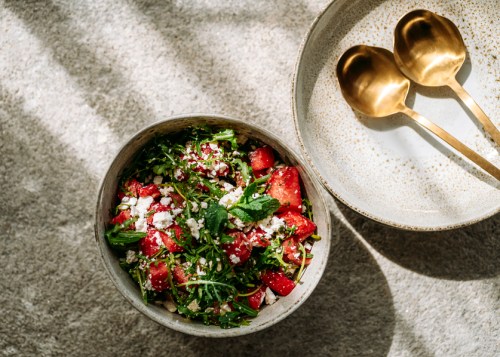L-Citrulline Is an Amino Acid Known To Boost Brain Performance and Heart Health, and There’s Only One Food You Need To Eat To Get It
A dietitian shares the many L-citrulline benefits to your health and provides the one key food that packs plenty of L-citrulline.

If you ask me (or pretty much anyone, really), watermelon has to be the best summer fruit… ever. It’s beyond tasty, immensely hydrating, and—as we’ll get to soon enough—super customizable, with countless ways to enjoy it throughout the warmest months of the year. While these benefits likely aren’t too surprising, what you may not know is that watermelon is actually a unicorn of sorts when it comes to its nutrient composition. It’s the only whole-food source of one amino acid that’s known to boost your health on several major fronts, including but not limited to cognition, heart health, and blood flow: L-citrulline.
Experts in This Article
Florida-based registered dietitian
Keep reading to see what L-citrulline is and why it promises to be so beneficial for your health. Plus: Discover creative ways to up your intake of it with sweet and juicy watermelon aplenty.
What is L-citrulline?
“L-citrulline is a non-protein amino acid found in the flesh and rind of watermelon that may hold promising health-related results,” says Kim Rose, RDN, CDCES, CNSC, a dietitian based in Florida. While some amino acids comprise protein, L-citrulline isn’t one of them. With that said, a 2013 review in The International Journal of Applied and Basic Nutritional Sciences explains that L-citrulline “stimulates protein synthesis in skeletal muscle” and “could play a pivotal role in maintaining protein homeostasis,” so it’s not a total dud in this regard.
L-citrulline is also a non-essential amino acid, meaning that your body makes it on its own. However, it’s produced at levels lower than what you’d get by eating watermelon or via supplementation.
The health benefits of L-citrulline
“L-citrulline may assist in heart health by lowering blood pressure; increase blood flow and reduce heart rate during and after a workout, respectively; and may help to decrease cognitive decline,” Rose says.
L-citrulline increases vasodilation, aka the dilation of blood vessels, which decreases blood pressure and improves blood flow. According to a 2018 Nutrients article, it works by increasing the bioavailability of arginine, which “subsequently leads to elevations in nitric oxide synthesis.” (Nitric oxide is a compound that relaxes constriction in the small muscles of the blood vessels.) Over time, greater intake of L-citrulline—via watermelon as well as through other vasodilator foods—can support lower risk of hypertension and heart disease.
From there, a study published in the Journal of Agricultural and Food Chemistry demonstrated the functional benefits of L-citrulline following exercise. Though it used a small sample size, the study found that athletes who drank either 500 milliliters of pure watermelon juice (1.17 grams of L-citrulline) or watermelon juice enriched with an 4.83 additional grams of L-citrulline helped to reduce not only the recovery heart rate of participants, but also their muscle soreness after 24 hours compared to a placebo group.
Lastly, Rose mentions a 2020 study published in Alzheimers & Dementia, in which researchers found that L-citrulline supplementation in mice may modify cognitive decline since nitric oxide “plays an important role in synaptic plasticity, learning, and memory.”
Simply put, thanks to its abundant L-citrulline content, everyone’s favorite summer fruit works overtime to support a range of impressive functions throughout the body—all the while delighting your taste buds and keeping you hydrated.
How to boost your L-citrulline intake
Again, watermelon is your best bet to load up on this amino acid through diet, though supplementation is also an option to boost your intake even further or when watermelon is no longer in season. (Note: As always, consult a trusted health professional before adding new supplements to your regimen.)
While there no precise intake recommendation currently exists for L-citrulline, Rose shares that a two-cup serving of watermelon (which can contain anywhere from 286 to 1,266 miligrams, depending on quality and breed) “may help to support vascular health and maintain healthy blood flow.” She continues to say that to yield other benefits, the exact recommended amounts are still being researched.
In any case, prioritizing watermelon in your diet this summer is a sure bet to make progress in the right direction. Fortunately, Rose shares several creative ways to enjoy it that go beyond merely slicing it up, such as:
- Preparing a balsamic chicken and watermelon salad
- Serving up this gorgeous watermelon pizza
- Mixing a colorful summer fruit salad with watermelon chunks, berries, and apples
- Freezing watermelon ice cubes
- Blending a slushy made from frozen watermelon and lime juice
- Treating yourself to a freshly-muddled watermelon spritzer
Sign Up for Our Daily Newsletter
Get all the latest in wellness, trends, food, fitness, beauty, and more delivered right to your inbox.
Got it, you've been added to our email list.










